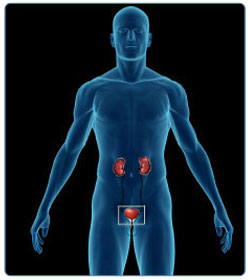Q: Which doctor should I see if I am diagnosed with Glomerulonephritis?
A: A Nephrologist should be consulted for glomerulonephritis.
Q: What is the most common type of Glomerulonephritis among children and what is the prognosis?
A: In children, glomerulonephritis occurs in the form of minimal change nephropathy. The kidney tissue will look normal after a biopsy with minimal changes, but the symptoms of glomerulonephritis will still be present.
The symptoms include dark brown colored urine, fatigue, weight loss, breathing difficulty, rashes over the buttocks and legs, fluid build up in the tissues and development of pale color on the face.
Q: I have Focal Segmental Glomerulosclerosis (FSGS) and need a transplantation. will my disease come back?
A: Glomerulosclerosis is a chronic condition and the scarred glomeruli cannot be restored to their original condition. Administering the appropriate treatment will aid in delaying the progression of the disease, which also depends on the age of the patient, the stage of the disease and the ability of the patient to cope with treatment.
As time and disease progress, some patients may require a kidney transplant. Though the kidney transplant is necessary and will help the condition, there exists a chance of glomerulosclerosis reappearing even after the transplant.
Q: I always have some trace of blood in the urine when I am running and my doctor says it is likely to be IgA Nephropathy, what should I do?
A: IgA nephropathy is caused due to the deposition of IgA antibody in the kidney and it may even take 10 to 20 years before the symptoms are expressed.
After strenuous exercise like running, red blood cells may be expelled in the urine, giving urine a tea color or a cola color. Make an appointment with the doctor. Also look for other symptoms like swollen feet and hands. If there is excessive bleeding, it could be a more severe infection or condition requiring immediate medical help.
Q: How does the doctor know the type of glomerulonephritis?
A: The symptoms are the first clue about the underlying disease which is later confirmed by performing a blood test. In most instances, doctors may require a kidney biopsy to confirm the diagnosis and to study the extent of damage to the kidney.
Q: What is kidney biopsy and how is it done?
A: Kidney biopsy involves taking a sample of the kidney tissue to be studied under a special microscope for a detailed study about the state of the kidney. This provides vital clues which can be used for effective treatment. There are two ways of obtaining a kidney biopsy.
A. Open surgery: A small piece of kidney tissue is removed during a surgical procedure that involves making an incision.
B. Percutaneous: A needle is injected into the skin above the kidneys and is used to obtain a kidney biopsy, usually guided by ultrasound.
Q: What are the complications of kidney biopsy?
A: Complications as a result of procedures performed to take a kidney biopsy are rare. In very rare cases, if there is excessive bleeding, a blood transfusion may be required or a blood vessel may be damaged necessitating an additional surgical procedure to treat the damaged vessel.









